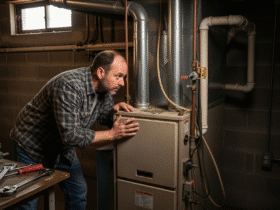Did you know that life expectancy has more than doubled in the US over the last two centuries? According to experts, that’s partly due to improved sanitation and sewage management. Both, in turn, are all thanks to modern commercial and residential plumbing.
The thing is, many myths still surround today’s advanced plumbing industry. Unfortunately, some of those beliefs can be harmful not only to people but to the environment, too.
For that reason, we decided to compile this list of plumbing-related misconceptions. So, read on to learn what they are and the truth behind them.
Those So-Called Flushable Items
From wet wipes to cotton pads, you’ll find many of those items labeled “flushable.” According to their manufacturers, they’re safe to flush down the toilet.
Unfortunately, one study of 23 so-called flushable wipes proved them otherwise. Not even one of those products passed the test. They didn’t disintegrate or break down into pieces small enough to prevent pipe clogs.
So, for the sake of your plumbing and the environment, flush only the 3 Ps: pee, poop, and (toilet) paper.
All Types of Liquid Can Go Down the Drain
No, especially not if they’re liquid fats, oil, or grease (FOG). While FOG can be in liquid form while hot, they congeal or gelatinize once they cool down. Fats, in particular, can solidify even at room temperature.
From there, congealed FOG can start to form clogs in your pipes. It becomes worse when food debris and other types of waste adhere to solidified FOG.
Water Leaks Are Easy to Spot
No. On the contrary, many are hard to spot. That’s one of the reasons US homeowners waste 1 trillion gallons of water each year.
Such a colossal waste occurs because many water leaks affect hidden plumbing pipes. Remember: most of your home’s plumbing system is inside walls or under floors. Any of those components can spring a leak, and if they do, they can be hard to spot as you can’t see them.
One indication that you have hidden leaks is a higher water bill without an apparent reason. In such cases, it’s best to call professional plumbers to conduct a leak test in your home. These experts use acoustic, pressure, or thermal tests to determine leak presence.
If It’s Clear Water, It’s Clean
There are four types of water contaminants: biological, chemical, physical, and radiological.
Physical contaminants are often those that affect the appearance of water. However, the remaining three can contaminate water without making it look turbid.
So, just because your tap produces clear water doesn’t always mean it’s safe to drink.
It’s even more dangerous if the clear water is gushing out of your toilets. Toilets, no matter how clean they look, can harbor harmful microorganisms. As such, it’s best to call an emergency plumber if you ever experience toilet backups, as well as burst pipes.
Stop Believing These Fallacies About Residential Plumbing
There you have it, your guide on some of the most common myths regarding residential plumbing. Now that you know what they are, it’s time to spread facts, beginning with your household. For example, you can start by telling them not to flush “flushables” or pour liquid FOG down the drain.
That way, everyone can do their part in making your home’s plumbing free of problems.
Are you ready for even more home maintenance and improvement guides? Check out our latest posts for more tips and tricks then!










